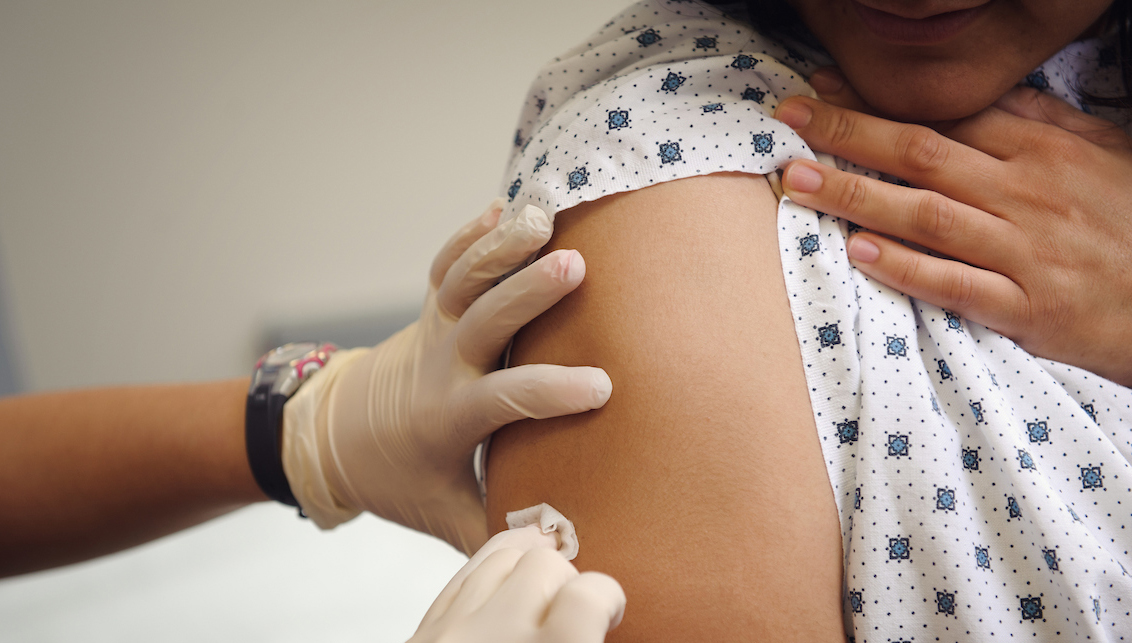Manikin Technology Enhances Medical Learning
 From age 2 playing with Mommy and Me dolls to age 24 “playing” with SimMan, the technology has grown immensely, but the concept has stayed the same.
From age 2 playing with Mommy and Me dolls to age 24 “playing” with SimMan, the technology has grown immensely, but the concept has stayed the same.
The Texas A&M Health Science Center (TAMHSC) Clinical Learning Resource Center has equipped its rooms with 20 life-size simulation manikins (SimMan) to allow students to learn how to be better caregivers by practicing numerous medical procedures.
Located on the second floor of the Health Professions Education Building, the center consists of eight simulation rooms that can be set up as an operating room with adjoining scrub sinks, an emergency room, a nursery, labor and delivery room, a 20 exam-table physical diagnosis room, two 10-bed hospital wards, two hospital rooms, 15 examination rooms, a nurses’ station, a medication room, and a simulated home environment. A second, 17,000 square-foot simulation center is located at the Round Rock campus.
Highly specialized technology fills the rooms, and cameras are scattered throughout to record video and audio of participants. This instructional technology is designed specifically for simulation activities.
Manikins lie in many rooms, many containing a computer-programmed body controlled from another room by educators and doctors. The cameras in the rooms function in partnership with the manikin technology to allow administrators to control the manikins’ responses to the care administered by practicing students.
These cameras are two-way audio and video cameras that also allow for real time and post-training review of participant’s actions. Not only can students review their own actions, they also can review their peers’ videos too, providing even more learning experiences.
“We get to see each other do [procedures] as well,” said Lesley Gardiner, a third-year student in the TAMHSC-College of Medicine. “The more we see and do, the better we’ll be at it.”
Research has proven that review of medical scenarios significantly improves the competency of practicing students, the quality of care they provide and their level of confidence.
Gardiner said she feels more confident about practicing on future patients after her repetitive practices in the Clinical Learning Resource Center.
“You’re able to hear and think through all the steps. You come to know what needs to be done and how it needs to be done and why it needs to be done,” Gardiner said. “So when you get with a patient for the first time, you already have a pattern in your mind of what you need to do so you’re more confident and comfortable.”
The simulation manikins contain technology that allows the student to perform standard medical procedures on it and obtain lifelike reactions.
If a student were to administer a dose of the hormone epinephrine, the physicians and educators monitoring the procedure would use software to speed up SimMan’s heart and respiratory rate correspondingly.
“We simulate the feeling of being in an operating room as much as we can,” said Benny Holland, M.P.H., RN, director of the Clinical Learning Resource Center. “The SimMan runs with the SimMan software, which is user-friendly. We can change his pulses to make them strong, weak or absent, or we can put lung sounds on one side and nothing on the other to imitate a collapsed lung.”
Observers and doctors from another room can not only control responses of SimMan’s body but can also make him “speak” to describe his symptoms. SimMan also has blood bags and tubing that can be connected to the manikin’s veins, which are self-sealing, allowing students to practice IVs multiple times.
Some of the center’s 20 robots are full body robots, while others may only include a single arm or isolated chest cavity for practicing more specific procedures.
These more specialized robots are particularly helpful to students who are practicing invasive procedures. They can practice on this inanimate object in real time but in a controlled setting, making it much less risky.
“The simulated clinical environment permits students to practice clinical skills without risking harm to actual patients,” Holland said. “Mistakes become genuine learning moments that improve the students’ ability to perform clinical skills rather than becoming potential harmful situations leading to poor outcomes for both the patient and the student.”
Though the patients in the Clinical Learning Resource Center are usually manikins, studies show that the mental and emotional responses from the student participants are much like those in real life scenarios.
To enhance the realism of the clinical simulation scenarios, instructors sometimes utilize trained, patient actors called standardized patients (SP). The SP is taught to provide all the information a real patient would provide to a clinician in a given clinical scenario. While invasive procedures are performed on the manikins, the SP provides the experience of communicating and examining a live person.
Use of manikins and SPs allow students to learn positive thinking patterns in a controlled setting, practice them multiple times and eventually develop them as habits. This increases patient safety and ensures more positive outcomes in real life.
Story contributed by Megan Lightsey
Media contact: media@tamu.edu

